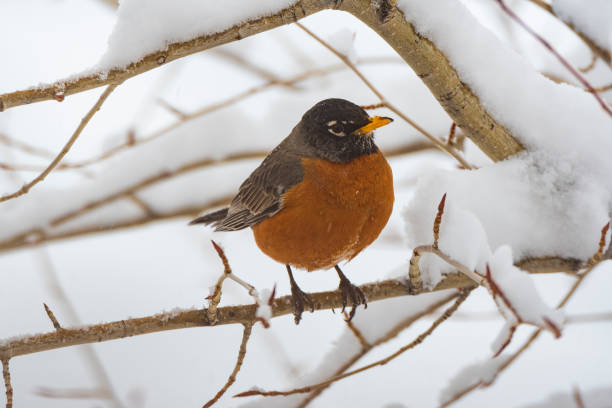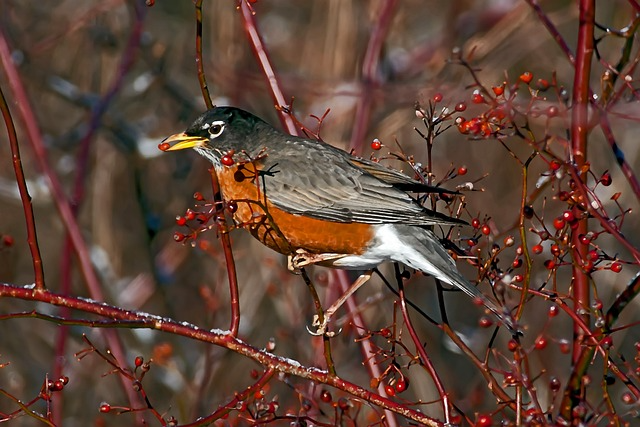Table of Contents
Scientific Classification
| Kingdom | Animalia |
| Phylum | Chordata |
| Class | Aves |
| Order | Passeriformes |
| Family | Turdidae |
| Genus | Turdus |
| Species | Turdus migratorius |
| Scientific Name | Turdus migratorius |
Description
The American robin is a medium-sized songbird that stands out due to its warm, reddish-orange breast and dark gray or brown back. Males usually have brighter colors compared to females, whose feathers are generally more subdued. Robins are characterized by their long legs and a distinctive yellow beak, along with a unique white eye-ring that gives their eyes a bright and alert look. They typically measure about 9-11 inches (23-28 cm) in length, with a wingspan of around 12-16 inches (30-40 cm).
Robins are famous for their lovely song, often heard early in the morning, making them easy to spot at dawn. Their cheerful calls are particularly delightful in spring, as they are among the first birds to return north after migrating for the winter.
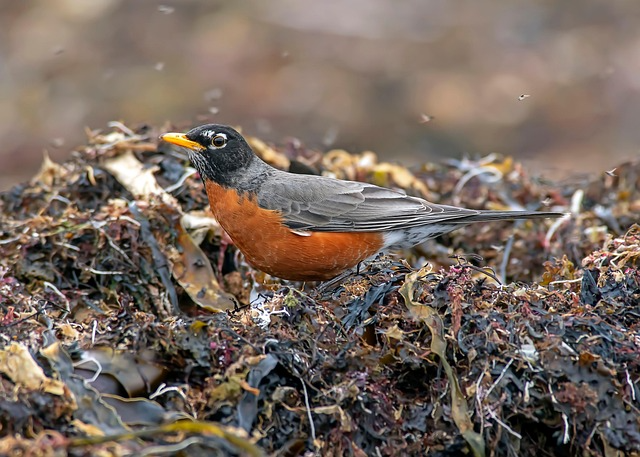
Distribution
The American robin is among the most commonly found birds in North America. It can be spotted in Canada and Alaska, throughout the United States, and extending into parts of Mexico and Central America. Robins are adaptable and can live in a variety of environments, from thick forests to suburban backyards. During the breeding season, they are primarily seen in the northern U.S. and Canada. In the winter, many migrate south to find warmer climates, although some remain in their breeding areas year-round if there is sufficient food available.
Habitat
Robins are quite adaptable birds. They can be found in a variety of environments, including woodlands, farmlands, urban parks, and residential areas. They prefer open spaces that have trees and shrubs, as these locations provide good nesting sites along with an abundance of insects and fruits. Lawns and gardens are particularly appealing to them due to the soft soil, which is ideal for worms and other invertebrates to search for food.
Diet
The American robin enjoys a diverse diet that varies throughout the year. In the spring and summer months, they primarily consume insects, earthworms, and other invertebrates, which provide essential protein for breeding and nurturing their young. As fall and winter arrive, their diet transitions to include fruits and berries like holly, juniper, and dogwood. This adaptability in their eating habits allows them to thrive in different environments and seasonal conditions.
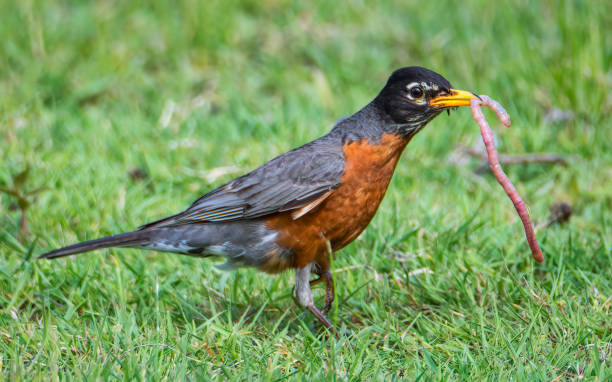
Behavior
Robins are daytime birds, mostly active during the day. They are very social and can often be spotted in groups when it’s not breeding season. However, when it’s time to nest, males become territorial and fiercely protect their area.
One of the most interesting things about robins is their singing. Males produce a beautiful, whistling song to mark their territory and draw in mates. Their song consists of a joyful blend of phrases, which is why they are among the most cherished songbirds in backyards.
Lifespan
An American robin usually has a lifespan of around 2 years in the wild. Nevertheless, some individuals can live anywhere from 6 to 14 years. Their relatively short lifespan is due to various threats they face. These threats include predators, harsh weather conditions, and dangers posed by humans. For instance, human-related dangers include collisions with windows and exposure to pesticides.
Reproduction and Lifecycle
Breeding season for robins starts in early spring and can extend into late summer. Males establish their territories and attract mates through singing and display flights. Once paired, the female takes on the task of building the nest. She typically chooses locations like trees, shrubs, or even window ledges and eaves.
Nests are constructed using grass, twigs, and mud to form a sturdy cup-shaped structure. The female lays 3-5 eggs, which are a striking sky-blue color. She incubates them for about 12-14 days until they hatch. After hatching, both parents take turns feeding the chicks. The chicks usually fledge the nest in 13 to 15 days. Robins often raise two to three broods in a single season.
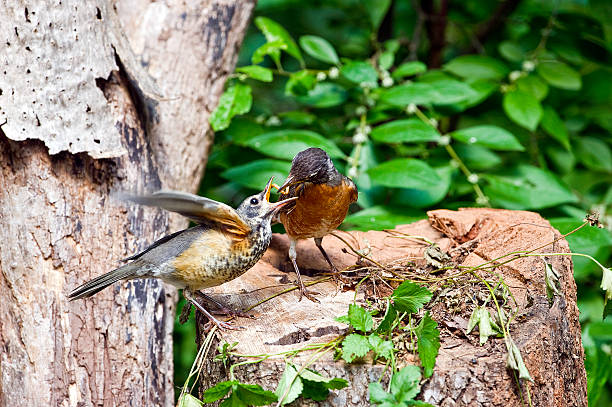
Predators
American robins face various natural predators, including:
Birds of prey like hawks and owls
Mammals such as foxes, raccoons, and domestic cats
Snakes that invade nests to steal eggs and chicks
To evade these threats, robins rely on their keen eyesight and quick reflexes. They also use alarm calls to alert other members of their flock about potential dangers.
Adaptations
Robins have several key adaptations that help them thrive in different environments:
Keen eyesight: Helps them spot prey and detect predators.
Seasonal diet changes: Allows them to survive year-round.
Many broods each year lead to high population numbers, even with high death rates.
Strong flight abilities: Enables them to escape predators quickly and migrate efficiently.
Conservation Status
The American robin is currently classified as Least Concern. Nevertheless, it encounters several threats, such as habitat destruction, pesticide use that diminishes insect populations, and the impacts of climate change.
Robins are highly adaptable, allowing them to flourish in urban and suburban areas. By reducing pesticide use and safeguarding native plants, we can foster a healthier environment for robins and other bird species.
Final Thoughts
The American robin is not just a familiar sight in our backyards; it represents renewal and resilience. With their cheerful songs and distinctive looks, they draw in birdwatchers and nature enthusiasts alike. Robins are incredibly adaptable creatures. They play an important role in the ecosystem by helping to manage insect populations and aiding in seed dispersal. By safeguarding their habitats and creating bird-friendly environments, we can continue to enjoy these beautiful birds for many years to come.
